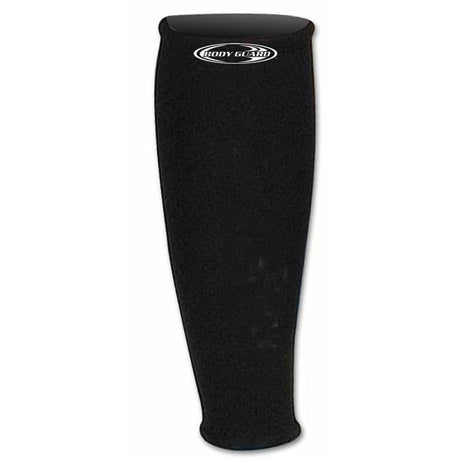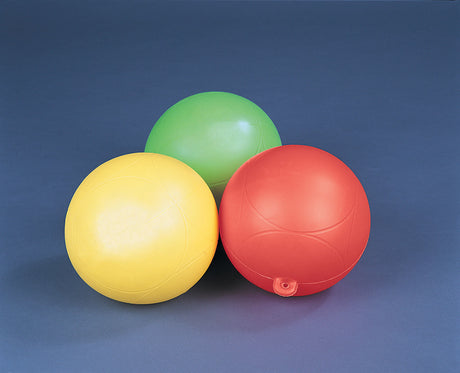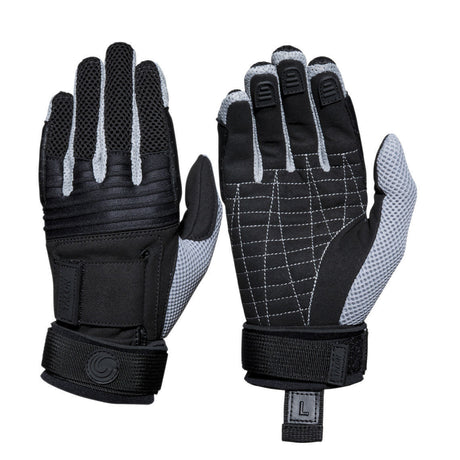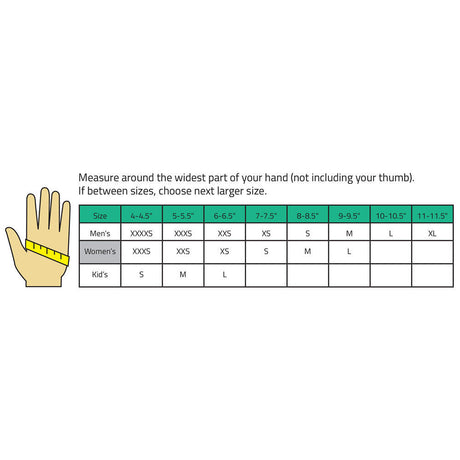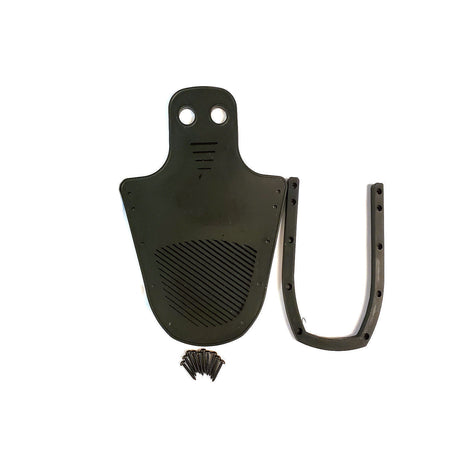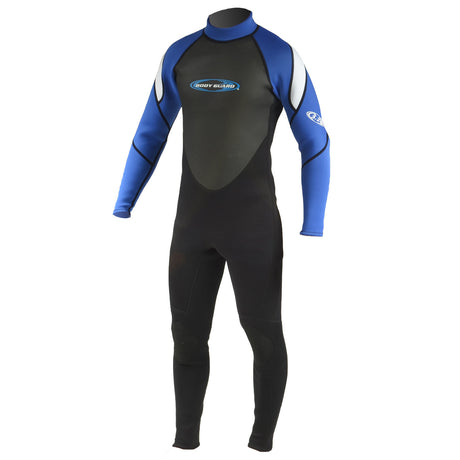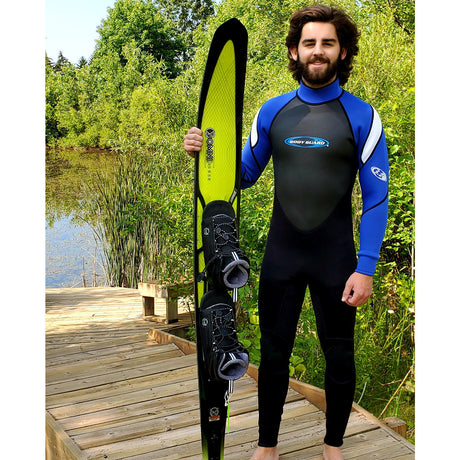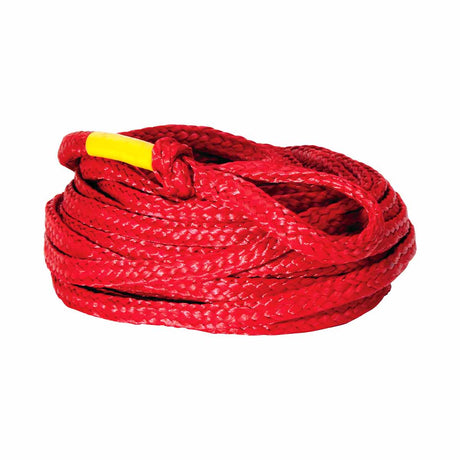Slalom skis are fun to ride, but challenging to master. Whether you're a first-time rider or you're just looking to improve your game, this guide will help you navigate all the specs and features, so you can find a slalom water ski that best matches your skill and riding style.
Arguably the most important aspect of any slalom ski is its size. Let's dive into it:
Slalom Ski Size vs. Rider Weight

The size of your ski is crucial: It determines how quickly and accurately you can make turns, and it determines overall stability and optimal tow speed. The length and width of the ski are primarily determined by rider weight.
Ski Length vs. Weight Chart
- 60-100 lbs (27-45 kg): 59-63 inches (150-160 cm)
- 100-125 lbs (45-57 kg): 63-65 inches (160-165 cm)
- 125-150 lbs (57-68 kg): 65-67 inches (165-170 cm)
- 150-175 lbs (68-79 kg): 67-69 inches (170-175 cm)
- 175-200 lbs (79-91 kg): 69-71 inches (175-180 cm)
- 200+ lbs (91+ kg): 71+ inches (180+ cm)
NOTE: These ski sizes and weights are general guidelines. If you're a newer rider, or if your weight falls between two ski sizes, it's better to go up one size. If you're a more advanced rider looking for a more nimble setup, go with the smaller ski.
Ski Width

There are no specific ski widths for rider weight. But some skis are narrow, while others are wide. Wide skis are preferred by new riders and those who prefer high stability. The Connelly Big Daddy (top) is one of the most popular wide skis.
The Connelly Outlaw (middle) is a popular "do-it-all" ski with a medium width. It'll serve both new riders and those looking for good responsiveness.
Those looking for maximum responsiveness will prefer a thin ski like the Radar Graphite Senate (bottom).
Ski Materials Compared

Pictured: Connelly V Slalom
Ski material affects performance by determining the flexibility of the ski, which has a direct impact on turning ability. Keep in mind that no matter what a ski's shell is made of, all slalom water skis are constructed with a poly-foam core.
Fiberglass: Offers a good balance of performance and affordability. Fiberglass skis are flexible and durable, making them ideal for new and intermediate skiers. A majority of water skis are made with fiberglass.
Carbon Fiber: Provides superior stiffness and responsiveness, which enhances performance for advanced skiers. Carbon fiber skis are lightweight and often more expensive.
Graphite: Similar to carbon fiber in terms of performance but typically lighter and more expensive. Graphite skis offer excellent precision and are favored by competitive skiers.
Composite Materials: These skis combine various materials to balance performance, durability, and cost. They are suitable for a wide range of skill levels.
"Which Ski Material is Best?"
There is no best overall water ski material. Some skiers want the most responsiveness possible, so they'll opt for carbon or graphite. These skis' tips resist flexing in tight turns, allowing for a tighter turning radius and quicker transitions across the wake.
Since fiberglass skis are more flexible, they're more comfortable to ride. They dampen hard impacts and can reduce fatigue. They're also more forgiving, making them easier to handle and turn for new riders.
Ski Tunnel Shape

Pictured: Radar Lithium Vapor
All slalom water skis have a concave tunnel that runs nearly the length of the ski. The depth and width of this curve contributes to a ski's turning ability and stability -- two attributes in direct competition with each other.
In other words, a ski that with high responsiveness and turning ability will be less stable in a straight line. A ski with high stability won't turn as quickly. It's this curved, underside tunnel that determines the compromise between these two aspects of a ski's performance.
Narrow and shallow tunnels have high stability and less responsiveness. Skis with this shape have flat edges on either side of the curve, which promotes predictability and damping on rough water.
Edge-to-edge and deep tunnels have high turning ability, but demand more control. These skis are favored for pro riders and those who run tight slalom courses. They're also less stable in a straight line, and are more negatively affected by choppy water.
Ski Rocker/Curvature

Pictured: HO Sabre Slalom
In addition to the tunnel running along the underside of the ski, slalom water skis also have a convex curvature -- or series of curves, in some cases -- that run from the tip to the tail.
There are three types of rocker profiles, or curves, found on all skis:
3-Stage Rocker
A ski with a 3-stage rocker has an angled tip and tail, with abrupt angular changes between the two that transition into a flat center section.
The 3-stage rocker has two major benefits: It rides deeper in the water, which promotes stability, and it keeps the tip above the waterline to promote good responsiveness.
The only drawback to the 3-stage rocker is drag. The abrupt transitions at the tip and tail, coupled with the flat center section, create resistance and make the ski ride slower than rocker profiles.
If you need the most responsiveness for tight slalom courses that demand quick transitions, the 3-stage rocker is ideal.
2-Stage Rocker
The 2-stage rocker is essentially a 3-stage profile with smoother angular transitions between the tip, tail, and center of the ski.
This profile is also called a hybrid, because it falls between the 3-stage and continuous rocker profiles.
This profile allows the ski to ride a bit higher in the water, allowing for increased speed and faster turns, while still affording good stability. The 2-stage is a "do-it-all" profile, providing good performance for both casual riding and more aggressive slalom course runs.
Continuous Rocker
The continuous rocker is the smoothest and fastest profile. Skis with this shape lack any flat center section, and they have no distinct angular transitions between the tip and tail.
Instead, a continuous rocker forms a single convex curve along the length of the ski. This profile favors wide, sweeping turns over tight turns and technical transitions. It's ideal for swooping, high-speed runs.
This rocker profile excels at gliding over choppy water, and it avoids feeling snappy when carving. These factors make the continuous rocker a great choice for those who just want to cruise on their local lakes, no matter the weather.
Ski Fins

Pictured: Radar Aluminum Ski Wing Kit
Slalom water ski fins play a significant role in how a ski handles -- so much so, that we wrote an entire guide dedicated to water ski fin setup.
We recommend reading it to learn all the technical details. But the simple summary is this:
- Large ski fins promote stability, while sacrificing turning ability.
- Small ski fins promote turning ability and quick edge changes.
- A fin close to the tail promotes stability, while sacrificing turning ability.
- A fin further from the tail promotes turning ability and responsiveness.
Some slalom ski fins are adjustable when it comes to placement and depth, so keep these rules in mind when dialing in your setup.
"Which Slalom Ski is Right For Me?"
In addition to all the specifications above, picking the right ski depends on your riding style, experience level, and the type of skiing you plan to do.
Free Riding
- Ski Features: Wide ski, narrow tunnel, continuous rocker.
- Materials: Fiberglass or composite.
- Fin Setup: Close to tail, medium or high depth.
- Recommendation: Look for a stable ski that’s flexible, with a smooth rocker profile. A bigger fin will help with straight-line stability, carving big turns, and navigating choppy water.
Competition/Tournaments
- Ski Features: Narrow ski, wide tunnel, 2-stage rocker.
- Materials: Carbon fiber or graphite.
- Fin Setup: Medium, adjustable fins.
- Recommendation: Choose a ski that blends responsiveness with speed. A long, narrow ski with a 2-stage rocker will be ideal. Adjustable fins will allow you to dial in your turning ability depending on the course.
Trick Riding
- Ski Features: Short, wide ski, wide tunnel, 3-stage rocker.
- Materials: Fiberglass or composite.
- Fin Setup: Smaller fins or trick fins for easier maneuverability.
- Recommendation: Opt for a ski that allows for quick transitions and high responsiveness at lower speeds. The 3-stage rocker will soften landings after mid-air spins and flips.
Selecting the right slalom ski involves balancing your weight, skill level, and skiing style with the appropriate size, materials, shape, width, and fins. Always consider testing a few options if possible to find the one that feels right for your unique needs and preferences.
Don't Forget Your Bindings!
 The ski bindings you ride with are just as important as the ski itself.
The ski bindings you ride with are just as important as the ski itself.
Read this guide to see what type of ski binding is best for you.
Not sure whether a double boot or toe plate binding setup is better? We break down that debate here.



